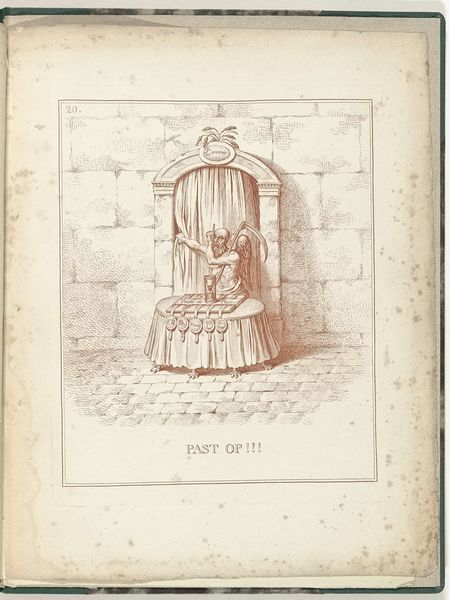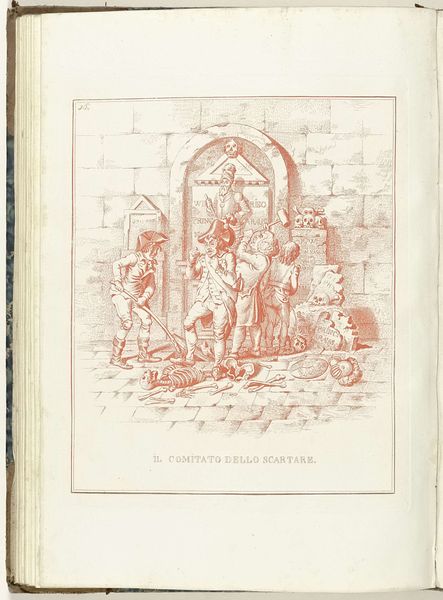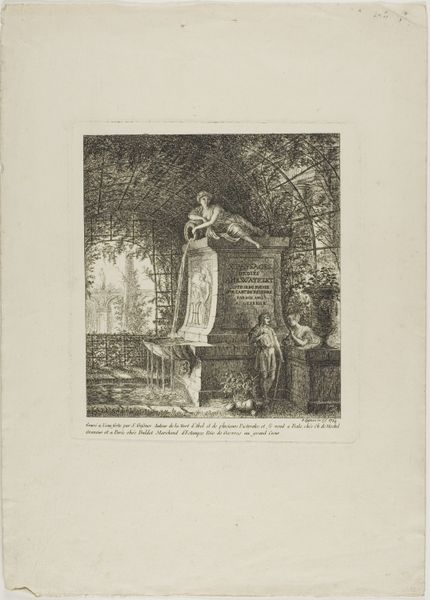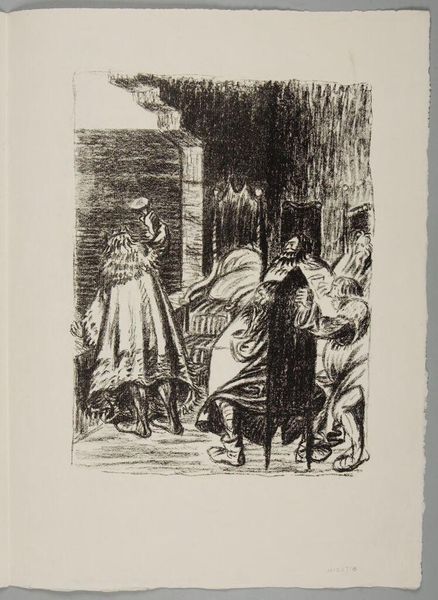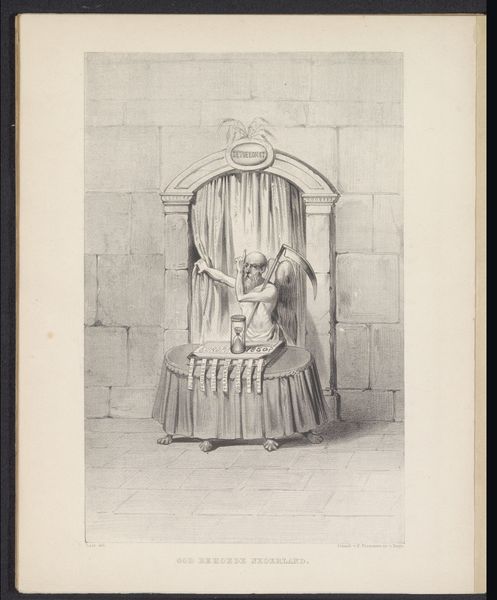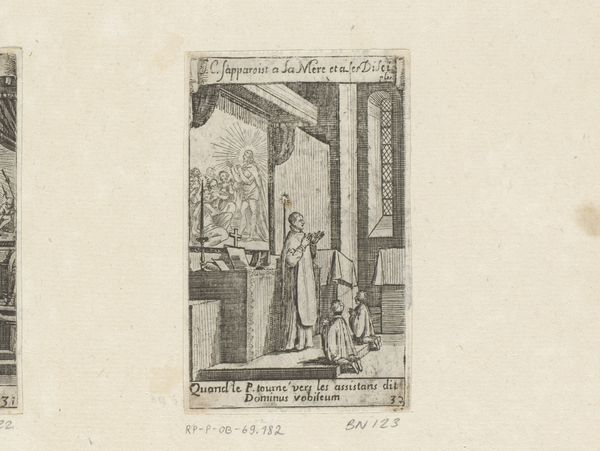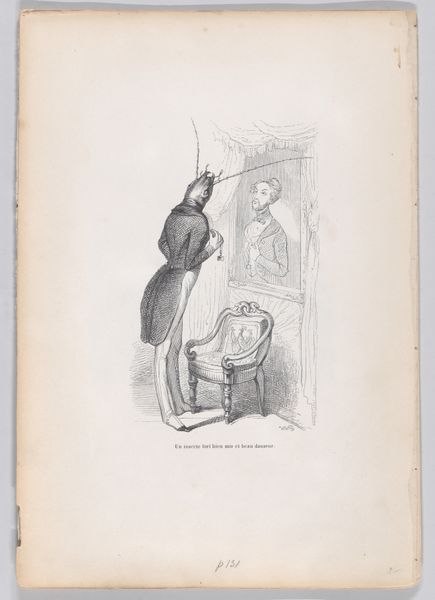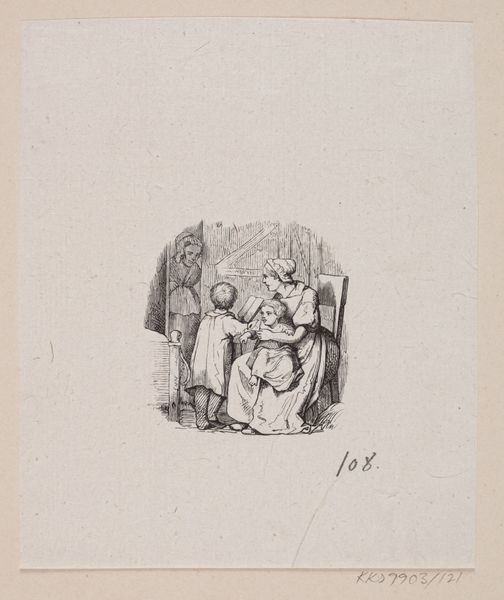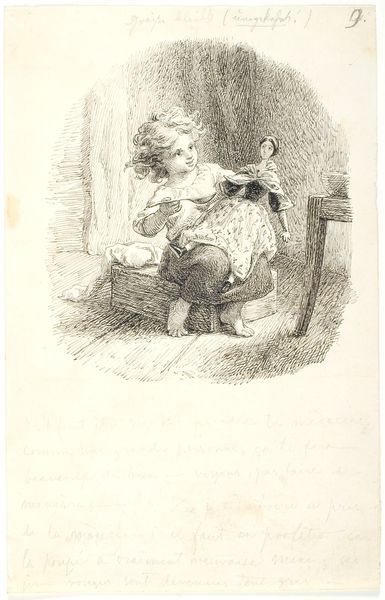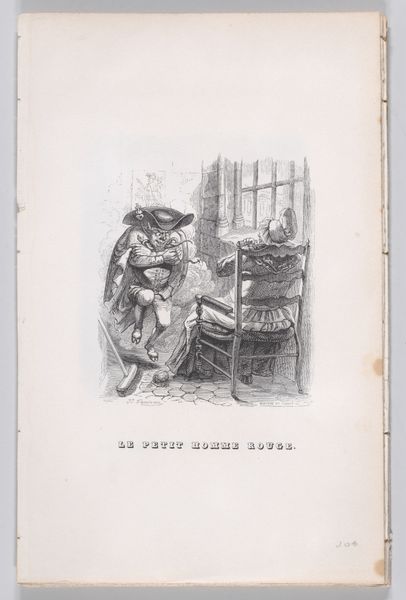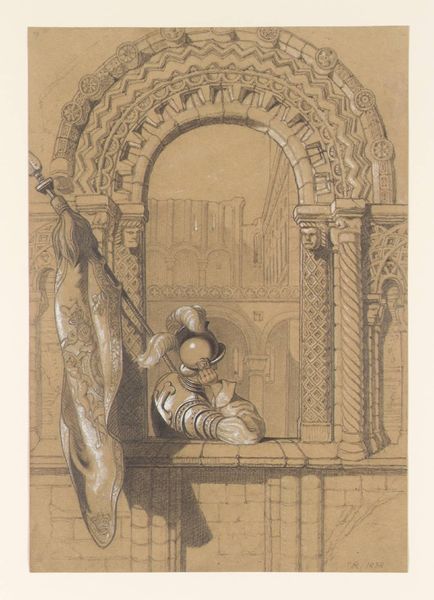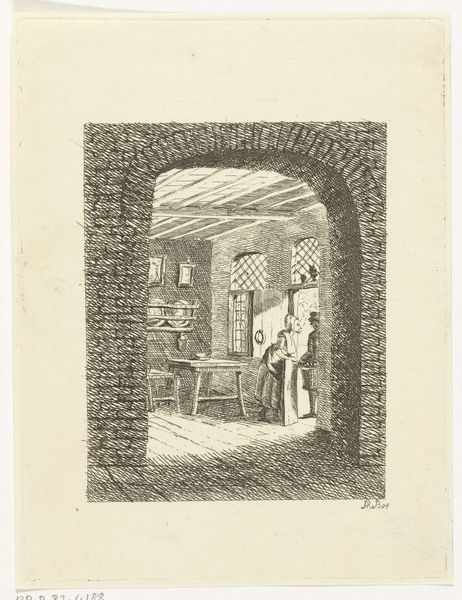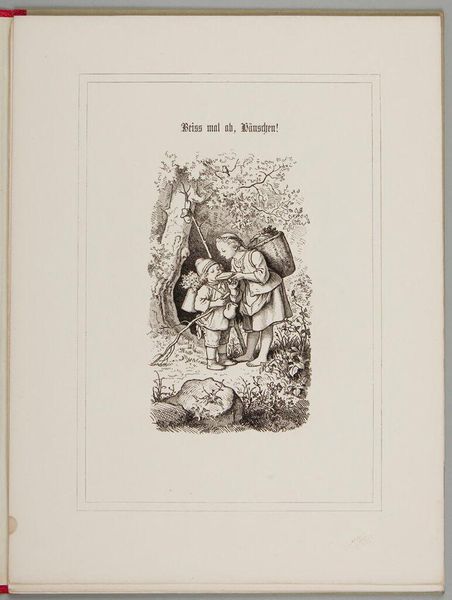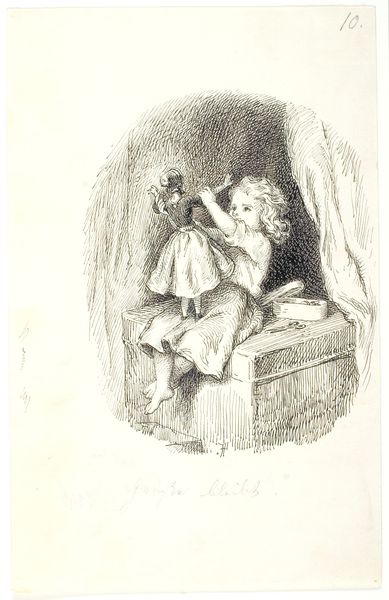
drawing, etching, ink, engraving
#
drawing
#
neoclacissism
#
allegory
#
pen sketch
#
etching
#
figuration
#
form
#
ink
#
geometric
#
line
#
history-painting
#
engraving
Dimensions: height 270 mm, width 222 mm
Copyright: Rijks Museum: Open Domain
Editor: So, here we have "Father Time at the Gateway to the Future," created around 1795 by an anonymous artist. It's an etching, predominantly in ink. The mood strikes me as quite somber, even ominous. Father Time looks rather menacing as he pulls back a curtain. What stands out to you about the composition? Curator: Indeed. It's essential to observe the stark linearity that defines the piece. Notice how the rigid geometry of the brickwork contrasts with the flowing fabric. Furthermore, the artist's command of line weight and hatching creates a palpable sense of depth, particularly around the figure of Time himself. It projects a geometric essence, juxtaposing hard edges and flowing lines, isn't it? Editor: Yes, I see that contrast now! The hard lines of the bricks versus the flowing curtain… it's very effective. But what about the symbols used? Like the hourglass and scythe? Curator: Precisely. These aren’t merely illustrative details, but crucial semiotic components. The hourglass, of course, signifies the relentless march of time, while the scythe hints at mortality and inevitable endings. Now, consider their placement within the composition; the hourglass positioned prominently, almost demanding our attention. What does that signify? Editor: I guess that emphasizes the overarching theme of time's importance, of it running out? And, given that Time is revealing the future, maybe that it's something we need to be aware of? Curator: Precisely. This engraving isn’t just a visual representation, but a carefully constructed argument. The visual elements combine to form a powerful meditation on temporality. I trust you appreciate now the structural brilliance of this piece? Editor: Absolutely! Looking closely at how those elements work together really opens up the meaning. I had only seen it as bleak initially! Curator: Quite. Attending to visual form and structural relationships always leads to greater comprehension.
Comments
No comments
Be the first to comment and join the conversation on the ultimate creative platform.
